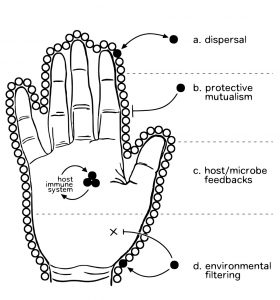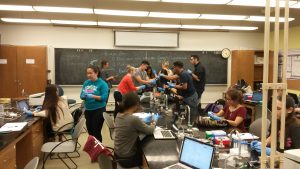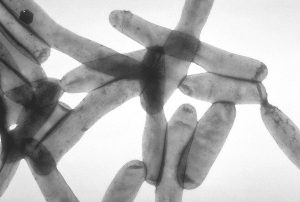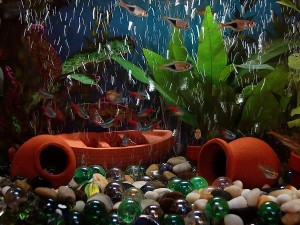(This post was written by Roo Vandegrift at the University of Oregon) I was recently asked to spearhead the writing of a review centered around the interaction between the concept of hygiene and our increasingly nuanced understanding of the human skin microbiome for the Biology and the Built Environment (BioBE) Center at the University of …
As introduced a few months ago, our lab (with indispensable help again from Ashley Vater) taught a new research-based freshman seminar course. The impetus for this course was one that we ran last year, testing if Swabs to Genomes was possible in a 10-week quarter. Given the complexity and expense of the genome sequencing, we …
Microbes around the house Editorial: An emerging paradox: Toward a better understanding of the potential benefits and adversity of microbe exposures in the indoor environment – J. Mensah-Attipoe – Indoor Air (OA) In order to further explore indoor microbial exposures and their associated health effects, and to help establish research agenda priorities, a two-day workshop to …
Just got this from the a representative of the National Academy of Sciences who asked me to post here. UPDATED June 13, 2017 (based on email from NAS) Scope of work: An ad hoc committee of The National Academies will review the state of science with respect to Legionella contamination of water systems and issue …
Just a quick post here. Studies of the microbiology of built environments that house animals (e.g., aquaria, farms, animal shelters, zoos, etc) are of growing interest for multiple reasons. In that regard this paper might be of interest to some – because it covers some topics that are sometimes neglected in this general area – viral diversity …
Microbes and buildings Bacterial Hygromorphs: Experiments into the integration of soft technologies into building skins – ACADIA 2016: Association for Computer Aided Design in Architecture – Carolina Ramirez-Figueroa – Newcastle University (OA) The last few years has seen an increase in the interest to bring living systems into the process of design. Work with living systems, nonetheless, presents …
“Social media is a waste of time”, “You should be writing grants”, “Spend more time at the bench and less time on Twitter” I don’t really want to wade into this discussion too strongly… there are a number of great resources out there documenting the utility of social media in science and science communication (examples …
Since this was the last week of the quarter, we didn’t require the students to blog as in the previous 9 weeks. Also, mostly we recapped what had happened in the class and discussed various assignments. But the students did measure the antibiotic resistance of their strains, and we also had a powerful demonstration of …
Just a quick post here that all the information (including slides and videos) from a really interesting CASIS sponsored workshop are online. The topic relates to the most extreme built environment to date… the International Space Station. The workshop was called “Exploring the Microbiome/Immunome and Disease on the International Space Station” and took place back …
Microbes of old Microbiology Meets Archaeology: Soil Microbial Communities Reveal Different Human Activities at Archaic Monte Iato (Sixth Century BC) – Rosa Margesin – Microbial Ecology (OA) Microbial ecology has been recognized as useful in archaeological studies. At Archaic Monte Iato in Western Sicily, a native (indigenous) building was discovered. The objective of this study …




